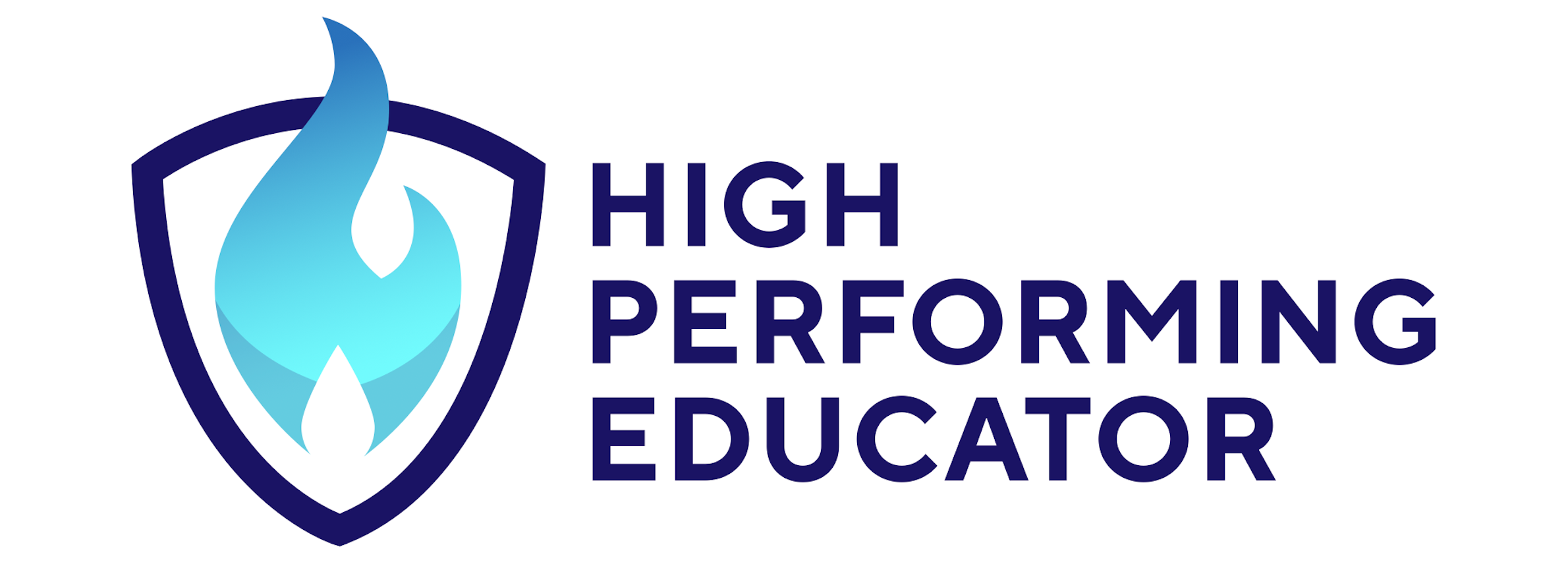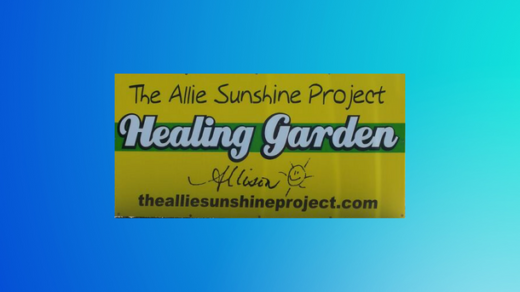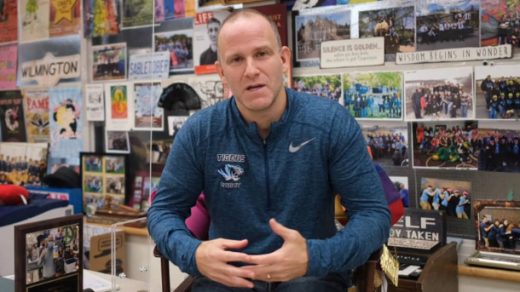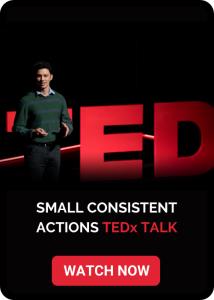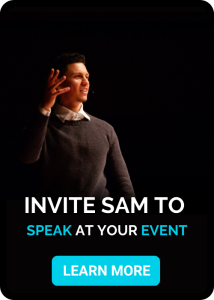About Karl Mercuri
Karl Mercuri (@Karl_Mercuri) is the Social and Emotional Coordinator at The Priory School in Montreal, QC, Canada and a grade 4 teacher. This allows him to actively implement innovative SEL practices amongst the students, staff, and community at The Priory.
He has passion for social and emotional learning, ei, positive psychology, behavior, and educational leadership. Over the last 19 years, he’s thrived as a teacher, educator, consultant, and leader.
Connect with Karl: Email | Website | Linkedin | Twitter
Listen Now
Listen to the episode now on Apple Podcasts, Spotify, or on your favourite podcast platform.
Resources Mentioned
Erika Rath – Director of Student Services The Sacred Heart School of Montreal
Casel – Advancing Social and Emotional Learning
The Transcript
**Please note that all of our transcriptions come from rev.com and are 80% accurate. We’re grateful for the robots that make this possible and realize that it’s not a perfect process.
Sam Demma (00:00):
Do you want access to all the past guests on this show? Do you want a network with like-minded individuals and meet other high performing educators from around the world? If so, go to www.highperformingeducator.com. Sign up to join the exclusive network and you’ll get access to live virtual networking events and special opportunities that will come out throughout 2021. I promise you I will not fill your inbox. you might get one email a month. If that sounds interesting. Go to www.highperformingeducator.com. Welcome back to another episode of the high performing educator podcast. This is your host and youth speaker today’s guest is Karl Mercuri. Karl is the social and emotional learning coordinator at an elementary school out in the greater Montreal metropolitan area, but originally his journey into education. As here on this show, started back in Melbourne Australia, and he is obsessed with SEL social, emotional learning and, and answering the questions.
Sam Demma (01:06):
What do students really need and how do we teach the whole child? And how can we get our students to have a positive impact on society when leaving the walls of this classroom? The reason why I wanted to bring Karl on the show is because one, he was recommended by a past. And we give a shout out to Erika Rath during the interview. So Erika, if you’re listening, thank you so much, but also because I’m obsessed with the exact same things that Karl is, although he formally works on solving these problems day in and day out within one school, specifically working with grade four students with that being said, if you don’t already have a pen and paper nearby, definitely grab it because Karl shares so many resources, ideas, and exercises that you can use to make sure that your students are thriving mentally and emotionally during this trying time, I’ll see you on the other side, enjoy today’s interview talk soon, Karl, thank you so much for coming on the High Performing Educator podcast. Huge pleasure to have you on the show. We were introduced by past guest, Erika. You didn’t know me. I didn’t know you. And now here we are on this podcast. Why don’t you start by sharing with the audience who you are and how you got into the work you’re doing with young students and young people today?
Karl Mercuri (02:24):
Hey Sam, thank thanks for having me and a shout out to Erika for actually putting us in contact. Yeah, just a little bit about me. You, you can probably tell with the accent I’m not from, from Canada. I I arrived about two and a half years ago. I met my wife in Australia. I’m originally for, from Australia and my educational journey started 19 years ago. So I originally started as a gym teacher or we call ’em gym teachers here, but we call ’em PE teachers back at home. And and then halfway through my journey, I was really lucky. I had a great administrator who’s who was able to see a little bit of potential, I would say, and turn around and said, Karl, it’s about time you get into the classroom. So I shifted from the, the gym teachers to the classroom.
Karl Mercuri (03:19):
And from there, a lot of doors opened for me and especially a passion for wellbeing, student wellbeing, social, emotional learning. And I was really lucky. I was chosen to go and be trained in what we call a, it was a mental health and wellbeing course about 10 years ago in Australia, which was a, a, a framework called kids matter. And it was across Australia. And so I become a facilitator of that at my school. And then just everything basically flourished from there. All the passion started. So I went back and I did a little bit of studying behavior, been studying in I’m still studying at the moment in leadership. I’ve got a lot of, I would say training in SCL, social-emotional learning emotional intelligence, positive psychology, and then the world is easier oyster as they say. So I, so for me right now I, I hold a job at a beautiful little elementary school in Montreal called the Priory.
Karl Mercuri (04:22):
My role there is on the I’m the SEL coordinator. And I also, so day today, I’m, I’m the grade four teacher and the school SEL coordinator. Nice. And then week to week and month to month, I actually go out and consulting schools across Montreal. So I, you know, elementary or high and just help these schools really make social, emotional learning a priority. And how do we integrate it and how does it just become part of everyday teaching instead of just an extra. So I think that’s the really big thing at the moment and what we’re going through now, we need it more than ever.
Sam Demma (05:04):
It’s so true. It’s, it’s so, so true. You, you mentioned something that piqued my interest. You said after you did the training, that’s when the passion started flowing and you went back and got additional training and behaviors and you started learning a lot more, the, what clicked after that initial certification that you did about kids matter? Like what clicked after that, that made you kind of shift your perspective and decide to go down this new path?
Karl Mercuri (05:34):
Yeah, I, I would say there was, you know, the initial training, there was so many aha moments, you know, it’s like, ah, is this, this is why a child behaves this way, or this is why I’m getting these reactions in the classroom. Or this is why this you know, this, this, this 16 year old boy is telling me to get lost basically, you know, and, or, or girl, and, and, and just understanding the fundamentals of, of, of, you know, developmental stages of in life and, and why things happen. And, and yeah, I just wanted to know more, I wanted more answers really. And the only way you can do that is by being a lifelong learner. You know, if you, if you’re not a lifelong learner, you’re gonna really just basically plateau aren’t you. So it’s, I, I feel like as an educator, it’s our duty to continue prospering and, and, and setting that example for the, for the rest of the, our students basically.
Sam Demma (06:39):
And I think one of the best ways to ensure you keep learning is of course, to take on the role of the student, but then as you learn new content, teach it to others, because I find that teaching to others is one of the quickest ways to also learn the things. If you are speaking to your younger self before the certifi, giving yourself a mini masterclass, per se, on emotional intelligence and social, emotional learning, how would you define the two buckets? And what would you say to ensure that someone understood how important these two things are?
Karl Mercuri (07:13):
Yeah. If I was to te if I was to talk to my 16 year old, say, I would say, firstly, that it’s okay to feel the way you feel. Mm. You know and that emotions, you know, are, if you could look at an emotion as a form of communication and not as this daunting thing, that’s happening, this daunting cloud, that’s ha hovering over your head or this, these these crazy thoughts that are going on. You know, so I would say that, you know, a thought is actually not, it’s not tangible, is it? I would teach myself, it’s not gonna be there forever. And, and how do we reframe things? And, and that’s where I would go down that path. Yeah, definitely.
Sam Demma (08:06):
I love that, that, that makes so much sense. And it, it’s a important lesson to learn and reinforce right now because there’s so many different negative thoughts and thousands of thoughts that go through our minds every single a day, and being stuck at home, I think even increases the number of thoughts we’re having.
Karl Mercuri (08:25):
I would even go down the path when you’re saying this is, you know, we actually have to go out of our way right now to find a positive thought. We have to go out of our way right now to find a positive feeling. And, and it’s so essential, you know, like we know that the negative thoughts and the negative feelings, and I’m putting my con you know, my knowledge of AI and, and, and SCL that, that hat on right now, but we know the negative to they’re so strong and powerful and prevalent because that’s what we you know, that’s our makeup as a human being, where we are out to look out for the negatives as a survival mechanism, you know, but, but right now we need to actually physically and mentally actually look out for what is the positive to then reframe everything that’s going on right now, or ask, we’re just gonna really struggle up. You’re really not gonna see the, the light at the end of the tunnel, as they say.
Sam Demma (09:30):
It’s so true. And I’ve read that, that your beliefs or your thought, that’s the things that you hold true lead to your emotions, how you feel those emotions lead to your actions, what you do in any given moment, which then leads to the result you get. And so when we’re not getting that result that we want, you know, the first thing to do isn’t to change our action, but to ask ourselves, what am I choosing to believe? What am I thinking about? What thoughts are going through my head? I, how do you explain emotional intelligence? What is like, if you could define emotional intelligence, like, how would you do so what is emotional intelligence?
Karl Mercuri (10:04):
Yeah. That’s a big, oh my goodness. That’s a really big, I guess question. And it’s a great one, you know, but for me, it’s the awareness. Mm. Having an internal awareness of one’s self. Yep. having a really clear, not clear, but an understanding of social awareness of others. So what is my impact? What am I doing right now? That’s having an impact on someone else. Mm. You know, establishing that form of empathy for yourself. Also, we always say that empathy is about others looking at others, but even having some empathy about yourself, you know, it’s really, really powerful. It’s and that’s, that’s a lifelong skill, basically. Yeah. And then the last one is what, what really motivates you as a person? How are you gonna achieve these goals? You know, how, through this awareness, through this understanding of others through this empathy, how do I actually achieve these?
Sam Demma (10:59):
And for the educator for you listening right now, to this podcast you know, how does that, how does that person listening, take this idea and try and help their students become more social, emotionally aware and more emotionally intelligent, like is there, of course you do this, like you can consult with schools and you help them. But if someone wanted to take a quick nugget away that they could take back to their kids right now, what are, what is a low hanging fruit or something they could do to kickstart this conversation and put their kids on this path to developing that emotional intelligence?
Karl Mercuri (11:35):
I, I’m gonna be really honest. There’s this one tool called a mood meter. The mood meter is a super cool tool that comes out of it comes out of Yale university under the ruler approach. These guys are like doing some work in the field of social, emotional learning. And the reason why I love the mood meter is because it appeals to five year olds, but it also appeals to 18 year olds. Mm. And the mood meter is, is a, a resource where it’s a quadrant. It’s actually it’s a quadrant. We it’s broken up into sections. And the mood meter basically helps our students through understanding the amount of energy that’s running through their body, how pleasant they’re feeling to then find the emotional vocabulary. So you can actually a, a spot on the mood meter, which then replicates a, a, a specific emotive word.
Karl Mercuri (12:41):
So you gotta think this is an amazing tool, especially for 16, you know, 17 year olds or 15 year olds. Because if you have a check-in, you are about to start your, you go, all right, guys, you know, get your mood meter out or whatever. And let’s see where you’re at on the, the colored quadrants and the mood meter. The yellow is, is high energy, high pleasantness. So we are finding the happy, the excited, the motivated, the elated type of emotions. You got the red, which is high energy, but really unpleasant. That’s where you find the S the annoyed, the peeved, the, the, you know furious type of emotions. And then you’ve got the bottom, you’ve got low energy, super unpleasant. That’s where you find the sad, the that’s blue, the SADS, the, the press, the, the you know, really kind of like solid type of emotions.
Karl Mercuri (13:44):
And then you’ve got low energy, but high pleasantness. And that’s where you find calm, grateful, and so on. And the thing is with these guys, is if we can have check in these students can start to, they come in and they make this connection, right. I’ve walked into class right now. I’ve bumped into someone on the way through, I’ve forgotten my books. I haven’t had breakfast. I’m gonna do this check in right now. And I’m gonna put everything into context as to how I’m feeling and actually find the correct emotive word. Mm. And the, the reason why I love it is because if you ask someone right now, how you’re feeling, I’m happy, mad, or sad, , that’s all we have as vocabulary, or I’m like, oh, okay. But if we can extend that vocabulary, which is, that’s what the role of the mood meter is, then a teacher can actually accommodate and, and, and, and get to, to what they need to do for these students.
Karl Mercuri (14:51):
You know, if the student turns around and says to me, you know what, I am like super peeved right now, there’s a difference between peeved and annoyed. Cause peeved is you’re going little bit more unpleasant than what annoyed would be. So I would deal with that certain situation different to what annoyed would be. Mm. Does that make sense? If I, you know, got an answer from a child I’m feeling elated right now, compared to excited, well, then it’s, I’m gonna, I’m gonna deal. I’m gonna provide them with, you know, the interventions or whatever that they need, or the advice in a different manner. Cause it’ll be way more specific too.
Sam Demma (15:32):
I think it’s such a cool exercise because like, I’m even thinking about myself while you’re saying this and I don’t use many of those other emotions that I, that are probably on this chart. And to further that point, sometimes I just say, I I’m not feeling great, but I’m not like, I’m not even sure what it is. But if I had a menu in front of me, of all different emotions and options, I think it would make it a lot easier to, to pinpoint something down, which also, I think makes us feel better because when you’re not sure what it is, uncertainty like that breeds fear, and it breeds so many other negative emotions. But if you’re certain that you’re feeling a specific emotion, I think it makes you feel even more human. So it gives students the, the space to identify what the emotion is, understand that it might be a negative one, but at least they’re able to pinpoint why it is that and, and what’s happening.
Karl Mercuri (16:25):
And you, you just actually said by doing this by actually identifying a spec specific emotion, you are naturally self-regulating. Mm. So you’ve just said it in a roundabout way just then, but that’s what you do. You actually do reg self-regulate because you, you are actually now have the answer to why you’re feeling somewhere with that specific word.
Sam Demma (16:46):
Yeah. It makes sense because if I’m gonna pinpoint, oh, the emotion I’m looking for is that I’m angry. When I, when I say that I’m gonna like question myself and be like, I am I angry? Why am I angry? Like what’s going on right now? And that’s right. It starts this dialogue as opposed to maybe getting in trouble or yelling at a teacher. I’m having this little inner conversation with myself.
Karl Mercuri (17:06):
Yeah, am I really angry? Or am I just like, maybe I’m really jealous right now of something that’s happened between that’s and then you can really. Yeah. And then it’s that dialogue, that internal dialogue, but it’s also the external dialogue. Mm. Because that’s really important. Cause when you start to have that conversation and you go through that conversation, you’re like, you start to, to, to basically problem solve aren’t you you’re like, oh, this is why. Oh, okay. I get it now.
Sam Demma (17:36):
And yeah, I would say it even makes like, I haven’t done this yet, but I would, I would assume. And, and guess that it even makes the student or the person doing this more open to talking about the emotion with another person than if they didn’t do this exercise first. Very cool tool. I’m gonna link it in the show notes. While you said it, I very quickly searched it. And I, I found an image of it. It looks really cool that it looks like there’s over a hundered.
Karl Mercuri (18:02):
There’s a hundred, there’s a hundred I think it’s a hundred word. So there’s two of them. There’s one, which is the, the one without the word. So that’s where, that’s where you’ll actually use the grid. And then once you’ve found your spot, then you use the one with the word and you go, oh, okay. So this spot means this word. Cool. Yeah. I highly advise when you do that and I’ll, I’ll give you the link. There’s actually an app and it’s really cool. And then you can track your days and see what quadrant are you in on most days and what words are coming up really often. And you can, it’s really cool.
Sam Demma (18:37):
When would you recommend a, a, a educator uses this? Would it be at the beginning of a day of school? Obviously, I don’t. I mean, you, you could do it every day, I guess, but one would be ideal times to use this sort of an exercise?
Karl Mercuri (18:47):
I generally would do it any like transitional times on the arrival to school after like a lunch time, you know, when the kids come back cause you don’t know what’s happened. Yep. And that always has an impact on your class afterwards. It depends even, you know, I’ve even used it as a reflective tool after a lesson, you know, how, how are you feeling now after we’ve feel this? Yeah. Gives me a bit of feedback as to how the lesson’s gone too, you know? So yeah. So many different ways to use it, like yeah. And, and, and it just needs, this is where where my passion is, this, this kind of stuff needs to be incorporated as part of just everyday teaching. Yeah. It shouldn’t just be an extra, it should be part of, of what we do, you know.
Sam Demma (19:31):
That’s so true. It’s so, so true. And if there’s an educator listening who wants to learn more about SEL and emotional intelligence, what are some learning resources or tools that you found helpful that you think they should look into or start reading.
Karl Mercuri (19:46):
Your number one? I guess web, well, your number one, I guess website that you would go to is the Casel website. Mm. These guys are at the forefront of social, emotional learning research. They actually have within the website, they have categorized programs. Very cool. So you can go there, you can, you can look up and, and look at the competencies, the SEL, the five SEL competencies, and look at a program that fits certain competencies to meet your school’s needs. Mm. So there’s, there’s a lot of that, but I would even say, go, as far as saying before you do any of that, it’s really important to just look into only and see what you’re already doing. Cuz you’ll be very surprised. Schools are already doing a lot of this. Yeah. They just haven’t actually labeled it as, oh, this is part of SEL. We didn’t really know, you know? And so maybe do a little bit of auditing as to what you’re doing already and then just plug the holes basically and whatever you’re not doing, then go out and find the answers.
Sam Demma (20:55):
Love it. Very cool. Yeah. and through, through social, emotional learning, I’m certain that you’ve seen students transform. Now you work with younger students but I’m sure you’ve, you’ve seen many breakthroughs or when kids work through something emotionally themselves and they come out the other side maybe there’s even been some dramatic examples where this has had a huge impact on a young person. I’m curious to know if any of those stories come to mind and if it’s a very serious story, you can change a student’s name. And if they’re, if it isn’t actually even, or student, but some something you’ve heard of before, I would love to hear it as well. The reason I’m asking is because, you know, the person listening might be considering quitting this vocation or calling of teaching, do the, the challenges that they’re faced with this year and a story of transformation gets to the heart of the reason why most educators start teaching. You have an ability to change a young person’s life to put them on a totally different trajectory. And hearing that story could get them back on track and back bought into the reason why they started again, you work with really young kids. So it’s a little different when I ask a high school teacher. But do any of those stories stick out to you?
Karl Mercuri (22:04):
Yeah. I’m just trying to think of something that is, I would say before I go onto a story, I would say that just being vulnerable. Yeah. And real is probably the most powerful thing that you can do in a classroom. Yeah. With the children actually admitting when you make mistakes. Actually, you know, saying that, you know what, I, I don’t know the answer to this. Yeah. Let’s find it out together. You know, actually explaining how you’re feeling is to me is the most powerful because then these, and, and especially if adolescents like youth, they will respect you all because they actually know that you are not this robotic person that has all the answers. And so the vulnerability to me is probably the, the, the biggest and most important aspect for me, of, of, of teaching in terms of from an SEL perspective and just from an engagement perspective too. So yeah. But I’m trying to think. Yeah. I think you’ve put me on a swap here with, a bit of a, a, a story I’m not really sure right now.
Sam Demma (23:27):
No, that’s totally fine.
Karl Mercuri (23:28):
Maybe leave it with me while we’re speaking. If something comes up.
Sam Demma (23:33):
Yeah, that sounds great. Like, even if you’ve seen a moment where a kid looks confused and then after an exercise thinks, whoa, like this makes so much sense, you know? Yeah. like those aha moments are really interesting. Yeah.
Karl Mercuri (23:45):
Actually, something’s come up just now. Just see, there we go. I knew it would it was funny. I was, I was doing a lesson called expected and unexpected Hmm. And teaching my, my class. And it was, it was quite funny, actually, this is more of a funny one teaching my class that, that that if you do something expected from a social perspective and from an understanding, if I’m gonna do something expected, then the impact that it has on somebody else, else. Right. They will have a, a positive type feeling towards me or understanding towards me or they will, they, you know, the, the, the reception would be more accommodating, I guess like that. And so I’m in the class and I, and I, and I’m explaining that to them. And then halfway through the class, I just fall on the floor, fall down.
Karl Mercuri (24:59):
I start rolling on, on the ground, rolling everywhere and just doing absolutely crazy stuff and getting it up. And I I’m throwing things everywhere. And the, and turning tables upside down. And then the, the children look at me and they , and then I put the word unexpected up. And so my advice to them, and, and this was a huge, like big aha moment to them because I said, what did I just do? The in like, that was really unexpected. Okay. If that was unexpected, how did that make you feel? Oh, I was feeling really uncomfortable. I didn’t know what you were doing. I had some doubtful thoughts and, and, and I was starting to think, is this got crazy? You know? And, and, and so we, we started to put things together, right. We started to put kind of like scenarios together, and this is where the kids really got it, as I said to them.
Karl Mercuri (26:01):
And this was probably the thing that got to me. I said to ’em, if I’m walking down the, the street and someone’s walking in front of me and, and they drop a $5 bill or a $10 bill, what would be expected. And the scary thing is not all of them said, I’d give the money back. And so me, that was a bit of a, wow, we have a, we now have the most important job right now is to teach our kids and our youth, that it is expected to do those things that then will have a positive impact, like this snowball effect. Mm. Because if I just pick up that $5 bill and put it in my pocket, that’s super unexpected, but what happened? So the next person, if they put the $5 bill in their pocket and the next person, if they put the $5, you know, we are starting to create this kind of unexpected type scenarios and culture and world. And it’s just not what we wanna, what we wanna do.
Sam Demma (27:18):
Yeah, I love that. I love that analogy so much. My, my world issues teacher in grades 12 have taught me a lesson that a small, consistent action can make a massive global change. And it goes both ways. Like you’re saying a small positive action can compound and snowball to a massive positive impact, but the reverse is also true. And his, his theory led both a good friend of mine and myself to start our, our own theory, like our own hands on project to see if his, his lesson was correct by picking up garbage. Yeah. And it led to filling almost 2,500 bags so far, and we’re still going so it’s yeah. Cool analogy just made me think of my teacher. And I love that lesson so much. If, if people are, if you’re listening right now, maybe you can’t even do this in your school, even if it’s virtually. Yeah. I love that. That was so powerful. If someone wants to reach out to you, which at this point should be expected with all the amazing information you’re sharing what would be the best way for someone to get in touch with you? Can they email you?
Karl Mercuri (28:25):
Email or I’m on Twitter? I’m pretty active on Twitter and LinkedIn. Email is kmercuri@priory.qc.ca, LinkedIn is Karl Mercuri and Twitter is @Karl_Mercuri. They are probably the best three platforms. Perfect. and, and to be honest, if there’s any those educators out there, if you want a little bit of a heads up in terms of SEL, there’s a really, really cool Facebook group for those educators called SEL in Edu. And so it’s just a great place to start and a lot of active people, and they’re just willing to help out and give some advice, but I would really love, yeah. I’m happy to help out in any way possible.
Sam Demma (29:06):
I love that. Karl, thank you so much for taking the time to do this. I appreciate the insight into your brain and the research you’ve done and the work you’re doing. And it’s really cool to see you doing this. I appreciate it because I wish I had someone like you in my school when I was growing up and hopefully 20 years from now, we can see every single school having a person like you doing the work you’re doing. It’s really cool.
Karl Mercuri (29:28):
Thanks for having me. That’s, it’s been an awesome experience and a great discussion.
Sam Demma (29:34):
Cool. And there you have it. Another amazing guest, an amazing interview on the High Performing Educator podcast. As always, if you enjoy these episodes, please consider leaving a rating and review. So other educators like yourself can find this content and benefit from it. And here’s an exclusive opportunity that I mentioned at the start of the show. If you wanna meet the guest on today’s episode, if you wanna meet any of the guests that we have interviewed, consider going to www.highperformingeducator.com and signing up to join the exclusive network, you’ll have access to networking events throughout 2021 and other special opportunities. And I promise I will not fill your inbox. Talk to you soon. I’ll see you on the next episode.
Join the Educator Network & Connect with Karl Mercuri
The High Performing Educator Podcast was brought to life during the outbreak of COVID-19 to provide you with inspirational stories and practical advice from your colleagues in education. By tuning in, you will hear the stories and ideas of the world’s brightest and most ambitious educators. You can expect interviews with Principals, Teachers, Guidance Counsellors, National Student Association, Directors and anybody that works with youth. You can find and listen to all the episodes for free here.
